This page will be added to weekly and written in the tense of the moment, deciding what I feel about the work so far and reviewing the week.
Induction Week
Our first week back from the summer holidays and we decided to spend the week talking about what we wanted to achieve in the forthcoming year, as this was our last year and a crucial one for development to see if I am capable to further my education and push my artistic ability further into defining and developing my personal identity in art. This week we were introduced to our first project 'Transformation' in the form of a discussion. The idea of the project was to look back at the world's art and analyse the influences and transformations which have taken place, mainly focusing on artists who have taken artwork and changed them according to their own perspective. An example of this is Diegos Velazquez and Francis Bacon's Pope Innocent X.
Francis Bacon has recreated Velazquez's Pope Innocent X (1650), expressing his own style but through that, he has created a different description of the figure and narrative from the original piece. Velazquez depiction has presented a highly respected and holy figure, realistically painted whereas Bacon has transformed him into a distressed character, changing the colour palette to express perhaps sorrow using colour symbolism. His technique has created a ghostly, translucent form that is not all there, suggesting a different side to the Pope and creating a different perspective of him. All these differences are showing Bacon's true opinion of both the piece and its' subject matter and the institution of religion.
Other artists I researched included: Claire Sivanna Cullen, Pablo Picasso, Henri Matisse, Cindy Sherman and Richard Hughes.
Proposal
Other artists I researched included: Claire Sivanna Cullen, Pablo Picasso, Henri Matisse, Cindy Sherman and Richard Hughes.
Proposal
The title of my project is Transformation: investigating
the concept of change in the perspective of art. I will be exploring this
through assemblages, combining disparate everyday objects to create a series of
sculptures. My approach is to interpret the meaning of objects by changing the
way we see them, through the methods of deconstructionism.
As a
primary contextual influence, I will be referencing artists own interpretation
of original artwork or objects such as contemporary artists Richard Wentworth
and Cornelia Parker whom chose of media has transformed objects into their
works of art. I will also be looking at them of techniques, analyzing’s how
they have constructed their pieces, if there are any supports as well as their
specific sites. I will be learning how to successfully join objects so that it
is well balanced, contain aesthetically pleasing elements and mind provoking thoughts
– getting the audiences to see the piece has a whole and not the objects which
as formed it. A strong influence will be the conceptualism’s styles and views
of art; looking at my work as an idea, rather than a material object. This
theory will help me evaluate what define the idea of an object instead of
focusing on the physical form; looking at the association we have with its
structure and its relationship to us, the environment and other objects.
From this project, I wish to develop a greater
understanding of fine art sculpture, focusing on just playing with the Medias
and ideas, with no preplanning drawings just creating and making - This will aid
greater knowledge for analyzing structure, exploring logic and stability. I
will be exploring combining techniques and methods of support and balance in
sculpture.
Within this process, I will be regularly reviewing and
analyzing my work, involving arranged sessions with my peers to evaluate my
current work, which will hopeful process onto constructive critical responses. My
main method of evaluation with is my ongoing blog, analyzing each stage of
development and a weekly/daily diary for a personal evaluation. As a final
valuation, I will be working towards an exhibition of the project, a long side
my peers. This will not only be a reviewing of my overall work but of my
professional practice on the way to becoming a successful independent
artist.
Artist Research
15th - 19th September
I started the week off discussing potential ideas to push
forward with my tutor. We reflected upon how a sculpture or an object can be
changed. Apart from the physicality, what makes up a sculpture and
what can we do to change the piece? It is the same with an object, however it is its' function or universal description that defines it. For example, a chair's function is to be able to withstand someone sitting upon it (with worldwide expectations of its form and height because of its poetic relationship with a table). If the chair cannot be sat on it is not a chair but something else.
I am beginning to investigate the metaphysics of sculpture in terms of the relationship between mind and physical matter. My view - metaphysically, is that a sculpture is formed
from the artist's influence and the narrative given to it. If, by taking away
what the artist has given and replacing it with our own influences and ideas,
the piece will be transformed- becoming our response/interpretation of it.
I learned that to achieve this theoretical
method for transformation, I needed to apply 'deconstructionism' within my work,
allowing me to analyse and consider what to take away from the
piece.
I researched further into artists techniques and chose to look at sculptors as I feel I am favoring this discipline within fine art. I collected a range of visual references from contemporary sculptors because of the modern influence now to recycle or use found objects within art .Today's society has become slightly obsessed with recycling and not being wasteful. I have decided to adopt a similar philosophy towards my own work. I found great interest in Richard Wentworth, Michael Craig Martin, Cornelia Parker work.
 All three of these artists have, on occassion, used objects to imply or suggest another object by transforming it into something else. An example of this is Wentworth's kitchen plates which are cut into semicircles and aligned on the wall, and because of the shapes and the form they become, they suggest a wall banner and thus become one. Another element of the transformation taking place was the fact that the deconstruction took away the plates' function - they have become impossible to practically eat from them and so no longer a plate.
All three of these artists have, on occassion, used objects to imply or suggest another object by transforming it into something else. An example of this is Wentworth's kitchen plates which are cut into semicircles and aligned on the wall, and because of the shapes and the form they become, they suggest a wall banner and thus become one. Another element of the transformation taking place was the fact that the deconstruction took away the plates' function - they have become impossible to practically eat from them and so no longer a plate. After last weeks investigation into how artworks have been transformed, I looked further into the many different ways a piece can have a simple transformation. When its comes to sculpture, it could be as simple as turning it upside down or changing its colour. By doing this, we are deconstructing the piece, analysing it further and then changing it to have our own interpretation. When thinking about these changes, I related back to my previous project 'Assemblage' where I had created sculptures from found objects, by combining them to create something new. I felt the urge to repeat the same process as before and collect found objects, where I could then analyse them and begin a deconstruction process on an object.
I visited the recycle waste management center and collected a large amount of different types of electrical, non-electrical and metal objects. I felt overjoyed that I could find more than one of the same object allowing me to feel free to physically deconstruct an object without the regret or mistake of breaking it. As I collected my media I admired the collective geometric shapes and the many forms they were in. It was clear in these findings that I wanted to influence these in my work which 'geometric shapes' is something I have always done and then push on from there.
My idea is to start off by combining these objects to recreate another object of sculpture, changing the meaning of everything and just playing with my ideas and the media.
Exploring and Experimenting
22nd - 26th September
22nd - 26th September
This week was all about pushing my playfulness and seeing what i could create. I first played with a broken shopping basket, fan covers, computer parts and a towel. At the start, I acted upon instinct with the assemblage and just let my mind wander, finding myself placing the circular shape inside the basket, surrounded by squares and rectangles- a great contrast of round and straight lines. I then chose to add colour using the towel and computer parts, looking at complementary colours to draw attention the certain areas.
I felt like I needed to deconstruct the piece further, flipping the objects and tipping them at different angles - the original form of a shopping basket had vertical and horizontal lines, so it made sense to change this to change the perspective.
I also wanted to be creative with its linear structure, by using other objects elements to create more straight lines in the piece. This created a sense of a 'continuity' in the piece due to the impression of unbroken lines through laying - It made the viewer be drawn away from seeing the piece as different objects combine into one sculpture. To invoke more interest or develop further, I started to add and take away objects at the same time to understand drawing in space of the object and around it.

This assemblage (Above) was an interesting one to me, as I felt there was some sort of explosion narrative in the piece. Its formal elements were similar to a shattering form as the lines/metal spread out from the center of the work. It became an outburst to me, arranging an object's lines and shape to match others, enforcing our association to them, creating an entirely new object created from the mind and the physical.
I thought I would have some fun with this idea and created my own guitar with part of a stand, fan covers and a symbol. I continued this childlike behavior to create more sculptures.
 Developing onwards, I felt the need to bring in more media to play with, particularly wood. Fortunately, there were plenty palettes spare in the workshop, from past deliveries, which I was able to obtain. However, the palettes were too heavy, so as a way of putting my deconstruction to action, I decided to cut up the wood. This left me with a few blocks and planks of wood of varying shapes and sizes. The blocks immediately grabbed my focus, by way of reminding me of childhood building blocks and once this connection had been established, I felt compelled to try and mimic the thought process.
Developing onwards, I felt the need to bring in more media to play with, particularly wood. Fortunately, there were plenty palettes spare in the workshop, from past deliveries, which I was able to obtain. However, the palettes were too heavy, so as a way of putting my deconstruction to action, I decided to cut up the wood. This left me with a few blocks and planks of wood of varying shapes and sizes. The blocks immediately grabbed my focus, by way of reminding me of childhood building blocks and once this connection had been established, I felt compelled to try and mimic the thought process.I chose to use the blocks within other assemblages. Within this one, the blocks aided an overall triadic form within the piece as I limited the use of using three, the number three being an important triadic aspect. This piece was all about looking at similarities within objects so that when combined, they would have poetic relationships, harmoniously joining the objects into one. The fan, the stand and the blocks, all share the same equal triangular position in their form, displaying their similarity. Furthermore, the square base of the cone matches the square bases at the very bottom of the assemblage.
Reflecting - These ideas of creating a simple transformation has stimulated complex thoughts.
Take this chair for example, (images below) These are no longer chairs because you can't sit on them yet nothing has been taken away. In our mind, we fix the object back into a chair because of our human nature of order. As you look at it physically we question and state 'why has the object been changed?' and 'thats not right.'You could say a change like this would frustrate you and make you feel uncomfortable.
So from this I begin to question,Why would a simple change have a big effect on us??
Take this chair for example, (images below) These are no longer chairs because you can't sit on them yet nothing has been taken away. In our mind, we fix the object back into a chair because of our human nature of order. As you look at it physically we question and state 'why has the object been changed?' and 'thats not right.'You could say a change like this would frustrate you and make you feel uncomfortable.
So from this I begin to question,Why would a simple change have a big effect on us??
29th September - 3rd October
Continuing to play with the blocks, I felt the urge to build a stack with the wood and then knock them down like the playful childhood game Jenga. As I did it, I was curious to see how the blocks would fall, where they fell and how far from the original stack. Investigating, I chose to record it using a large sheet of paper under the stack and stretched it in the direction I would push it. The paper I happened to use for its grid design happen to be plotting paper which is befitting for the marks I was making.
As the blocks fell, I used a pencil and drew around the blocks and reassembled them. The second time the blocks were arranged in a different order from the first, having the first plot marks and the second stack as the next step but also an artwork of its own. The stack was now contradictory to the marks left on the paper, giving the structure an illogical look for the viewer, they would react to the piece in a way that they would mentally recreate the 'correct' stack from the plot marks - thus creating for themselves a new theoretical structure.
6th - 10th October
This
week I focused on developing my stacks further and the idea of theoretical structure. To start the week, I reviewed my process with my tutor, other colleagues and mentors. As they analysed my work, it came to light that my work was empowered by movement and that the sculpture became more than a stack of wood but a motion piece.
Within my first exploration of movement in play, I decide to randomly place the stack on an area of the plotting paper and from there, have a set of rules that will determine the marks made - illustrating the stacks form. The first set of rules I made were basis on the amount of blocks that made up the stack corresponding with the steps and mark made - the amount of spaces moved toward was how many blocks got left behind, making the mark of the new base block in the new space and so on.
Artist Research - Nicholas Pope
Interested in artist who may have also looked at using Stacks, sculptor Nicholas Pope was recommended to me for visual research. His work mainly consisted of powerful abstract quality working with natural materials such as chalk and wood. (like myself) Within one of his works 'The Apostles Speaking in Tongues Lit By Their Own Lamps' he created 33 terracotta figures to represent men, re-enacting events narrated in the New Testament. the events decided the holy spirit coming amongst the men who were Apostles in the form of fire at Pentecost. Each figure was unique and identified by their personal character shaped by their form and aspect or idea I would also like to push forward, toward my stack sculptures - to determine its movement through its character. The figures also had beaten circular metal placed at the top where there heads would be, representing 'halos' and used as oil lamp relating to the holy spirit likeness to fire and their light illuminates the attendant figures.
Two definitions of The Apostles
Matthew Sometimes represented as a publican or a money lender, depicted by Nicholas as a jowly ‘fat cat’.
James the Lesser With James the Greater the two street savvy ‘wide boys’, depicted with a quiff.
What I admire the most about this particular work of Pope's is the individuality of all the sculptures yet stood against one another, they are harmonious one. Pope has made his art's environment apart of the work, both sharing objects loaded with symbolic references and intensifying one anothers sensual connections to the belief. It is clear Pope has added a more powerful physical and atmospheric presence to the church expressing his passion of his belief within everything.
What I have taken away from analyzing Pope's work is that you need a sense of rhythm between not only the sculptures but the specific site it will be joining - having a correlation between two different things, influence a strong interest.
Pope also has a strong linear rhythm running through the surface of his work and use of space within and around the piece- great use of manipulating his surroundings.
Nicholas Pope
Another artist I looked at who worked with stacks was Peter Startup
Peter Startup - "My work is made with assembled wood,
discarded furniture, machine-moulded parts, machine-sawn planks, etc… They are
part of the discarded junk of urban life and through them I want to find
relationships which surprise and excite me, and that project an image through
the terms of classical sculpture – that is, in terms of space and volume."
Within a lot of his work, Startup his experimented with movable parts demonstrating a sculptors great sense and knowledge of logic and balance within sculpture. He has skilfully constructed and carved his wooden blocks so that they can slot and lock into each other. It is fascinating to see that he was able to achieve balance with such contrasting shapes/forms of wood without the use of frames and holds.
Peter Startup
I have taken a theoretical interest within his work and idea of his work being 'metamorphic', meaning he 'change in form' because they are adjustable. But what was most interesting was the fact he relates his work to human ways by sharing movement but also being able to alter positions. The idea also gave me a sense of joining between the work and the artist as to when the work would be alter; adjusting position both the work and the artist would be simultaneously moving. This idea inspired me within my movement pieces and develop those ideas further.
Being influenced by stacks, I started to collect more of the wood palettes, breaking them down into more wooden blocks and creating a now large amount of media to work with.
The next task was to work out, how I could create a sculpture; being able to withstand its own weight or hold its shape. I previously thought ideas of interlocking the individual blocks but instead it was suggested to use dawls; smaller pieces of wood that would be inserted inside and between the blocks to hold their shapes in place. This method would also ensure the blocks remain attracted to one another in movement and relocation of them.
I decided to create six individual sculptures inspired by the six different chess pieces within the game, but of course I will be straying away from limitations of chess's rules for a piece and influencing my own structures for the pieces. Forming the sculptures, I found myself unsettled with some creations, as the more I went on designing I started to create my own characteristics for each piece, giving them a sense of being or life.
I did come across some challenges when I was combining the blocks together. The small stacks held together nicely and was secre, but the heavier the stack the weaker the hold. I overcame this problem by making more holes for the drawls and using a lot of wood glue. To avoid more mistakes my stack much be hanged with alot more care and being more aware of the joints.
13th - 17th October
Continuing the use of plotting paper, I arranged my pieces on one side of the paper, as to act out a game board, making it easy for me to first analyze each step and their pathways - before more complex placement. This is also the same layout of many board games which I am familiar with, encouraging my association of playing and therefore enforcing me to play with the media and different methods.
I looked at different ways of mark making for each individual sculpture, considering shape, line, form and colour. All these formal elements where impacted by the characters I had mentally created for them, influences by word association in games with relation to restricted movements and distance of space between each sculpture as well as the very form and structure of the stacks. The choice of hues were greatly subjective to my history knowledge of colour symbolize within my work, were I investigated in colour characteristics compared to both Masculine and feminine features and behavior. I felt that as I made the sculpture, each had formed a more masculine or feminine appeal which interdicted their colour scheme.
The two images above are from the same sculpture that was influenced by the association form of a 'crook' (in a game of chess) its sculpture for bold and sharp geometric shapes and femininity. I felt the use of sharp geometric shape were quite contradicting to a feminine feature which is smooth lines and circular forms but need to be influence by the sculptures form.
After analyzing my work so far , I felt I had an visual problem between the sheet of plot marks and the sculpture pieces. Both aspects make up my design but are too different when considering them as one piece. How can I make my sculptures flow with the plot sheet instead of appearing as two different compositions - subtly joining 3D with 2D. To solve this problem, I discussed the matter with my colleagues and tutor and decide to conduct a crit,as we all had a particular matter to discuss. I presented my work, explaining that I am finding it hard to see the piece as a whole and felt it was because of the dramatic contrast between my vibrant colours and the natural wood hues as well the bright white sheet.
Having conversed, three possible directions were proposed.
- It was clear my colour palates had to change to an general palette of analogous hues creating harmonious relationships between the piece's aspects and therefore the overall piece. e first idea was to work with the bright colours and white; painting my wood stacks white to blend with the sheet and join the two pieces together but allowing the plots marks to have a dramatic contrast though colour. An extension of this idea was to use shades of grey instead of colour having a monochrome palette however I felt it would be too close to the chess influence.
- An opposite idea, was to work with the natural hues of the wood, colour mixing with tones of brown for the plot marks to create a balanced connection between the two, leaving the white to define the two and still have a flowing impression towards them.
- The last idea was to remove the plotting sheet, and use flat sheets of wood to represent the plot marks, removing the problem of an unbalance palette and creating further ideas of ideal specific sites such as the outdoors for my work to be displayed, with the media having a poetic relationship with the woodland - post and per-transformation.
To add interest to the work, I explored further into tones and the possible mixture of hues. I feel it is important to have diversity of colour is there forms because nature its primary sources does not have a consistent colour. I wanted elements of its original form to remain strong within the piece but still have colour. This will hopefully develop further questions and ideas of what wood is and its involvement in the artwork and nature. From this exploration I learned that it is best not to completely change a pieces' elements to the point its original state no longer exist. By doing this there are no clear connections or factors of transformation - the simple of transformations are more effective. By using wood vanishes I am encouraging elements of its original form to develop thought my creative interpretation on itself. In the future I will be encouraging these small changes and focusing on simplicity.
I experimented with the constancy of the vanished adding different amounts of water in application to wood and paper. It made sense to work along side of wood varnish instead of paint it create a strong link between the two dimensional works.
site specific placement
20th - 25th October
Producing another movement piece, I chose to plot the marks using the various wood varnishes on brush which create a harmonious colour palette within the work. It is clear that a radical change has been made forwards the project, working with the organic tones of wood and forming that simple link. I also felt the need to encourage another radical change as I have become too comfortable with the plotting paper which has it's limits.
The limits with paper is its not practical outside if my work was to become permanent in such a place. Bring my work outside was something I kept contemplating and felt a strong urge to do. Following my feeling, I decided to bring one of my wood stacks to the Wigan Park across from the park, to explore the creative possibilities. Although, If I am to pursue working with the land-art, I would have to develop away from plotting paper and look at different materials.
Placing my wood strack in the park was such much fun working in a different environment and even gave me a strong feeling like it belong there. This feeling of belonging is all down to the subconscious mind - looking at my work against the trees and seeing that they are made from the same material and even produced in the same environment. With all these aspects being so harmonious and pleasing, I wish to continue learning how I could work with Land-art and my pieces.
Considering composition within the site and the stack it was well balanced. This is because both trees and my work have vertical arrangements and share similar various lines and edges within the branches and the blocks of my work. To make my piece work in different site, I need to work alongside the visual elements that are presented in each specific site - making Forestland well fitting for my sculptures.
Woodwork
3rd - 7th November
At the beginning of the week, I changed the direction of my work by focusing on making my work suitable for different environments, removing the plotting paper and using wood to be used as mark making. With this I could make marks in the ground with wood or create wood samples to be used at the plot mark. With this Idea I started to work in the workshop, learning and developing carpenter techniques with wood. I wanted to learn all possibilities with wood and ideally, how I could achieve a certain shape with found wood. Working with found wood is hard because its comes in different shapes and sizes and can be impractical to use if at a small scale.
 To overcome these problems, carpenters used a technique called Tongue and Groove which allowing them the make large scale pieces from small samples of wood. The workshop technician Dave, aided me with this exploration of wood, starting off by making squares samples similar to the marks I made on the plotting paper. Other techniques used were; sanding to give a smooth and professional look and some sort of trimming technique used to make the wood thinner and ensuring the thickness of all the samples are the same. (using this machine to the left).
To overcome these problems, carpenters used a technique called Tongue and Groove which allowing them the make large scale pieces from small samples of wood. The workshop technician Dave, aided me with this exploration of wood, starting off by making squares samples similar to the marks I made on the plotting paper. Other techniques used were; sanding to give a smooth and professional look and some sort of trimming technique used to make the wood thinner and ensuring the thickness of all the samples are the same. (using this machine to the left).
The technique Tongue and Groove is where each piece of wood has a groove cut all along one edge and on the opposite edge a deep ridge (the tongue). This makes it so that the wood slots together like a jigsaw, making those large scales pieces.
This is a small clip of us making the tongue and groove with my found wood.
Change of Direction
Unfortunately, I soon learned that 3D work would not be practical and a health & safety risk at the hospital. This meant I had to produce work I could frame or on canvas without any sharp objects sticking out that might hurt a passer walking by. 2D being a factor now, I am faced with the challenge of turning my 3D work into 2D.
PDP - Hospital Meeting
During the week, we got the opportunity to go and be shown, the exhibition place at the Wigan Royal Albert Hospital, where we will be presenting our work. The chosen area was within a long corridor right next to a specialized cancer ward and leading to others. I found that the corridors were very busy having patients and staff continuously using the area to travel through, making it ideal to present work to be noticed by the public. I did notice however that the walls were magnolia and not white, which is professional for galleries to have. This meant I have to think about how to present my work so that the colour of the walls do not inflict the perspective of my work - as the environment as a great impact on how we interpret art as well as the pieces compositions. This meant that I had to enforce a border around my work to separate it perhaps framing my work with a white frame and border within that.
Apart from the long corridor, there is also the opportunity to exhibit work on near by stairs which has a larger surface area, for bigger work. This would give us a lot more space between our work so that the corridor doesn't appear crowned. This is very important as we all want our work to be seen but also allows our work to breath and stand on its own, without other works interfering. Furthermore, as a team, we need to come away from this, thinking and comparing our works to see how we can complement one another to create an successful exhibition that flows and is easy on the eyes. The whole aim to this show is not just to present our work but giving the patients of the hospital some enlightenment and a place to escape modern concerns whilst connection with the work.
2D Development, Sculpture drawings
10th - 14th November
 I found it difficult at first to think of ways of turning my 3D work into 2D, without finding ways of interpreting. There is no point trying to interpret my sculptures when I have the real thing, so I wanted to achieve a drawing which is a sculpture but in a 2D form - Impossible.
I found it difficult at first to think of ways of turning my 3D work into 2D, without finding ways of interpreting. There is no point trying to interpret my sculptures when I have the real thing, so I wanted to achieve a drawing which is a sculpture but in a 2D form - Impossible.
As an artist, my opinion towards sculpture is that of a true art because it doesn't lie - it is logical and what you see is what you get. Whist drawings and paintings are just visual and you can't touch the information it gives you.
So with this noted, I felt I needed to create a drawing that contain only aspects of my sculptures and combine them in different ways. That way my drawing would be the 'sense of the sculpture', no lie.
I started off by making marks with the wood varnish against scraps of wood. I didn't feel the detail of wood was being transferred well enough so I moved onto messing around with the consistency of the varnish adding water.
Update Proposal - "During the project, we had the opportunity, to arrange
our exhibition to be held at the Royal Albert Hospital in Wigan. The exhibition
will be involved in the Hospital’s project to fill its halls and corridors with
artwork to enlighten patients, giving them a place to escape modern concerns
whilst connected within the work. The opportunity was great for building our
professional practice within the art industry and build up contacts. However,
due to health & safety and insurance, it was unpractical to present
sculpture or 3D elements within the corridors, meaning I had to change my
primary proposal of sculpture outcomes into 2D forms. To resolve this, I chose
to produce sculpture drawing to be presented instead, focusing these round my
wooden stacks I was currently in the production of making. The drawings will
explore my sculptures formal elements and expressing them with the use of wood
vanish, paint and graphite - exploring mark making with the very wood blocks
that make up my sculpture stacks. "
 I found it difficult at first to think of ways of turning my 3D work into 2D, without finding ways of interpreting. There is no point trying to interpret my sculptures when I have the real thing, so I wanted to achieve a drawing which is a sculpture but in a 2D form - Impossible.
I found it difficult at first to think of ways of turning my 3D work into 2D, without finding ways of interpreting. There is no point trying to interpret my sculptures when I have the real thing, so I wanted to achieve a drawing which is a sculpture but in a 2D form - Impossible.As an artist, my opinion towards sculpture is that of a true art because it doesn't lie - it is logical and what you see is what you get. Whist drawings and paintings are just visual and you can't touch the information it gives you.
So with this noted, I felt I needed to create a drawing that contain only aspects of my sculptures and combine them in different ways. That way my drawing would be the 'sense of the sculpture', no lie.
I started off by making marks with the wood varnish against scraps of wood. I didn't feel the detail of wood was being transferred well enough so I moved onto messing around with the consistency of the varnish adding water.
Whilst experimenting, my tutor suggested to experiment with white spirit to see what would happen - combining something oil based with white spirit would not mix well as they are immiscible to one another. I liked the idea, letting the drawing have a mind of its own and seeing what effect it could make. Once I chucked the mixture on, I used the wood to make sharp block marks like the sculptures.
The drawing was successful, I admired the sensitive nature of the composition and the expressive and controlled contrast within the marks. The use of space also focuses the impression of a tower running vertical in the centre of the piece. This is the way forward.
This week I continued the sculpture drawings and pushed myself to be more expressive. I also stopped myself from thinking too much about the sculptures and learning the nature of my new mixture of wood paint.
I felt this new abstract way of working for me, as been such an insightful experience. It allowed me not to think too much into what I am doing and allowing my creative instincts to take over, making me play more on the media and just experimenting. As an artist, I do sometime over think about my work and methods which in some sense, blocks creative has I am not always allow myself to allow other elements and influences to be inspiring.
24th - 28th November
I first wanted to capture the continuous flow and motion of my strokes by not over powering the compositions, leaving white space to highlight the detail. I found myself developing a contrast of light & dark tones to represent depth and give a sense of 3D effect.
A colleague of mine, has been developing prints for the exhibition and encourage me to try experimenting with some for the day. I chose to work with mono-printing as it can be used in a similar way to painting, allowing me to use the same techniques -able to freely place ink and be expressive through marks. From previous print work experience, I was well aware that the marks I make will change when pushed though the printing press but I seen this as an opportunity to see how I could push the work further into different disciplines -they could also be use as backgrounds or collages in future work.
At the end of the day when I was cleaning my equipment and my wood blocks, I felt I had an 'creative accident' were I found more interest in the wood blocks then the paper prints. Producing the prints, I accident printed onto one side of wood which picked up the detail of the wood as well as having create an contrasting composition of sharp lines and blending shapes.
The ink having pick up its detail, give me the idea of imprinting this onto the paper prints combine with my other techniques. I applied the ink onto the blocks and wiped away, leaving small remains of ink that will put up the fine detail. To aid the process, I damped the paper before use with water, so that the paper would absorb the ink better.
The first two tries created successful light impressions but not all the detail was put up, giving it a more sensitive look. I did however, want to try and have a full print of the block and so I needed to change the pressure of the print but the thickness of the wood would not go through the press. I then decided to work with white spirit again, applying a little bit to the wood. Just like the wood stain, both the ink and white spirits ingredients made it so they couldn't mix well together but flouted on one other. This made consistency of both very important, making it right well allow detail to be transferred and not lost.
Prints
Finalizing Work for Exhibition
1st - 5th December
This week is the last week to get my work ready for the exhibition and so I will be focusing my time on preparing my work for presentation. I have it in mind that I will be using the work I already have, looking mainly at my structure drawings with acrylic and wood stain. To present my work , I went to the house-store 'Ikea' to buy white frames for them. I chose to buy 3 metre long frames with my intentions of using my A1 drawings which will have a white border, bring the size of the drawings to 49 x 69cm - giving a more professional look. I also brought a smaller frame of 50 x 70cm, ideally for A2 work, just in case my ideas change.
Excited about using the frames I quickly chose one of my drawings to place in it. I loved it and even liked my spontaneous choice. The problem now was knowing how to present the work in the frame, either without a border or with one. I liked the border because it made my work more professional giving a more crisp and clear look. However, the border was visually removing a lot of the detail, creating confusion as to the definitions of the work.
I eventually decided not to have a border, so that the original piece did not seem altered.
Exhibition Week
8th - 12th December
At the beginning of the week, it was made clear to me that I should name my pieces for a more professional approach within the exhibition. I usually have issues with naming my work as I feel it limits the imagination from allowing the viewer to interpret my work how they see fit. So to avoid direct names, I decide to name them after chess moves or association of them. I then mixed the words around between the lists to add more randomness. These are the names I came up with: Mirrored
Contour, Crusade, Check
Patriarch, Fortification, Castling
Block and Isolated
Line.
After I finished presenting my 3 large artwork pieces ready for the 'move' the day after, I had a last minute decision to have more work presented. This choice related back to having a border around my work when framing. It was a hard decision as I admired the two ways of presenting but decided to have no border. It was this last minute decision that made me buy 3 more frames but at a smaller scale and have them present with an boarder. That way I would have the contrast of the two and have both aesthetically pleasing elements.
After bring all the work to the hospital and storing them, it became clear to how difficult it would be to have our work mounted as we were unable to do it by ourselves due to health and safety regulations. We were reliant on the hosticals facilities technicians to mount them professionally. This was of course a challenge, as we had to rely on our communication skills to make sure anything went to plan. To help organize ourselves and the technicians, we decided to label all the walls and artwork matching them together and in number order - limiting the chance of anything being in the wrong place or upside down.
Whilst mounting the work, it became clear to how difficult it was to work in a busy environment at the same time as considering health & safety regulations. Previously I was only use to working in a gallery situation, having only a small sample of people to consider. In the hospital it was unpredictable, a lot of the time having to delay process until it was safe to carry on. I found as we were becoming an obstacle, people were drawn to see what was going on and started to comment. It was a great response and was a great opportunity to hear feedback first hand. Nevertheless, we were able to finish mounting the artwork in time for Thursday's exhibition endline and opening.
Within an professional exhibition, it is made successful when the work is explained so that the viewers can appreciate the art more. To achieve this we produced an A3 poster explaining the exhibition; what is was about, who was involved and how the public can get involved. We also produced individual artist statements from each artist explaining their work personally involving their influences and starting points.
My Artist Statement
This
series of works have been inspired by the process of transformation, investigating the concept of change in the perspective of
art. I have been influenced by artists own interpretation of artwork,
emphasizing their perception of the world though alteration of original works.
My approach was to interpret the meaning of objects, changing the way we see an
object though deconstructionism. I looked at what defines an object; the
association we have to them and their form.
The memory’s we have of objects, inspired me to explore
our attachments and how it alters the way we value and respond to them. I
explored these ideas with everyday objects, building up assemblages and forming
my current sculptures, which are inspired by chess. Furthermore, these
investigations lead me onto creating these sculpture drawings, based on the
essence of my 3D work.
This process emphasized the bonds we all share with
objects, as well as highlighting those personal to me and my practice.
These drawings analyze the movements between the physical
object and the abstract interpretations of association. The sculpture drawings are
impacted by shape and form along with the application of natural wood stains
and varnishes.
I
have taken inspiration from contemporary
artists Richard Wentworth and Cornelia Parker whom choice of media has
transformed objects into their works of art. Also, artists Peter Startup
& Nicholas Pope for visual references of their stack work.
My
work hopes to question the audience’s reaction to what they see - their mere
response, an association of their own. I want the viewers to question their own
perspective as to what art is.
Again, many thanks to Nick Baston who gave us the opportunity to have an exhibition at the hospital and inviting professional photographer and journalist from the local newspaper 'Wigan Observer' to publicize our work and the exhibition. Here are two of the photos given and used to advertise the work.
This is an image of me next to my sculpture drawing 'Crusade 2014', Mixed Media
Here is the group photo taken by the photographer of all the artist involved; Charlotte Stockley, Georgia Smallshaw, Calum Rennox, Brittany Bird, Holly Jones,Ashleigh Mayhew, Alicia Lowe, Adrianna Krzoska as well as our tutor Lee Paton, Nick Baston and the mayor of the hospital.









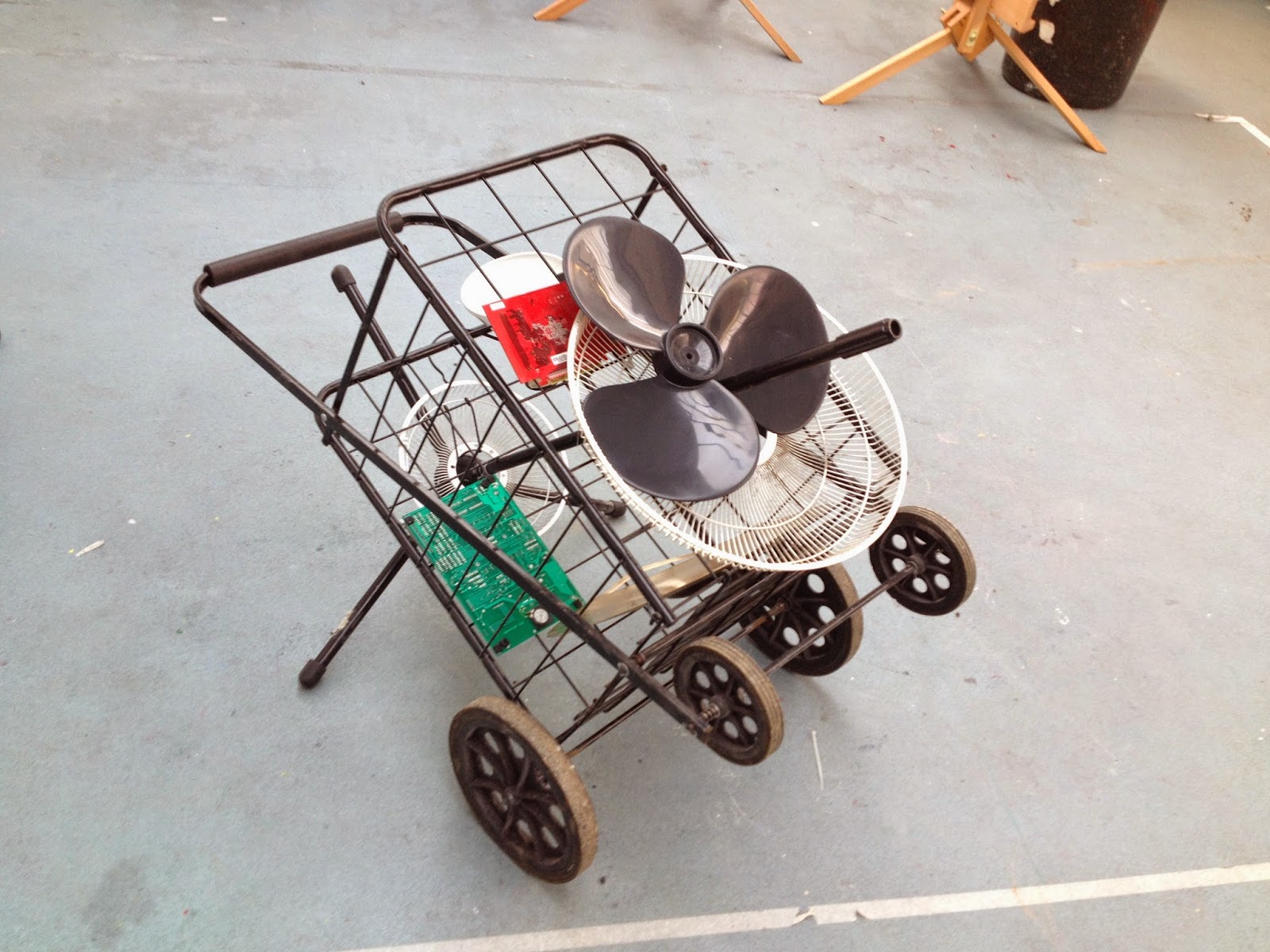


























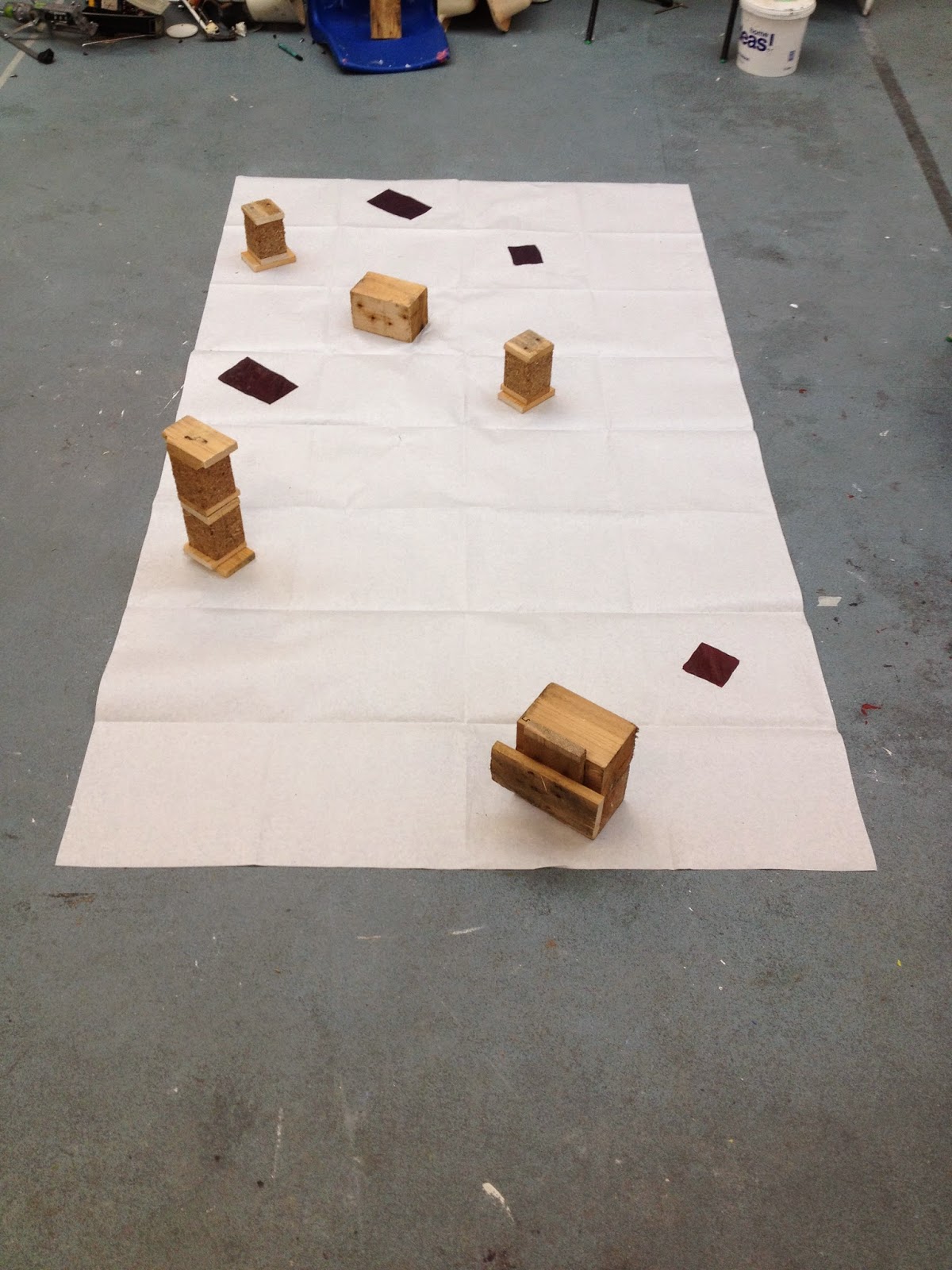




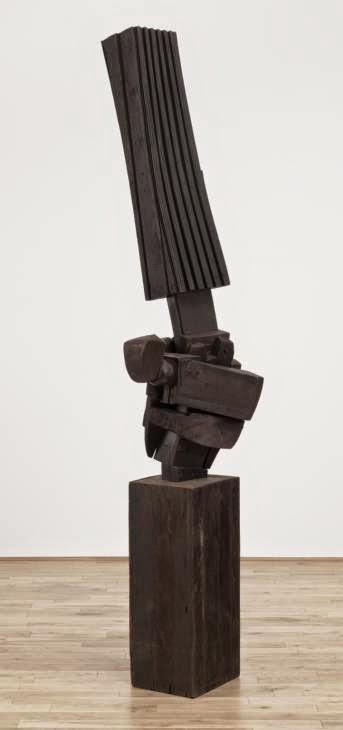





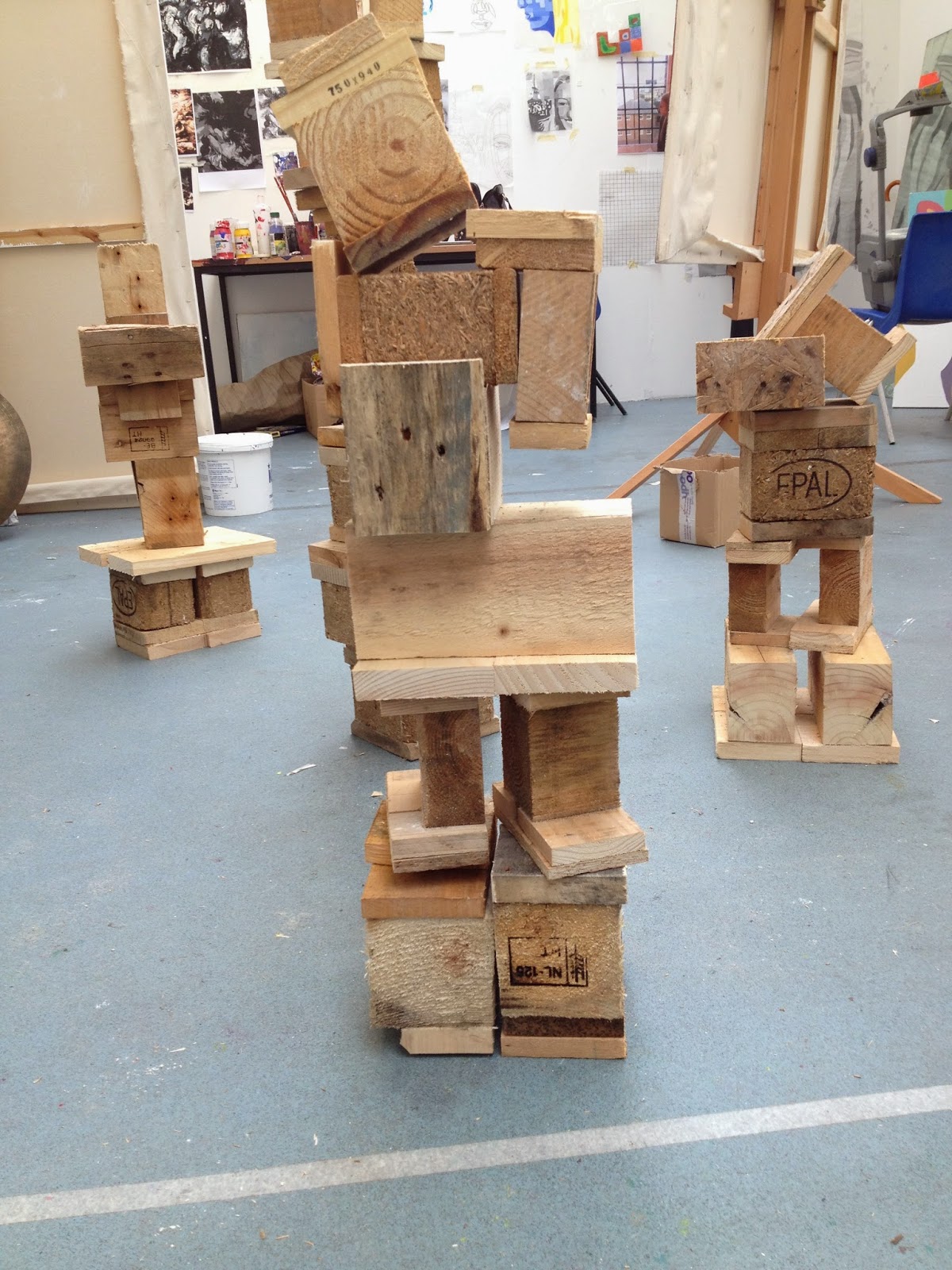



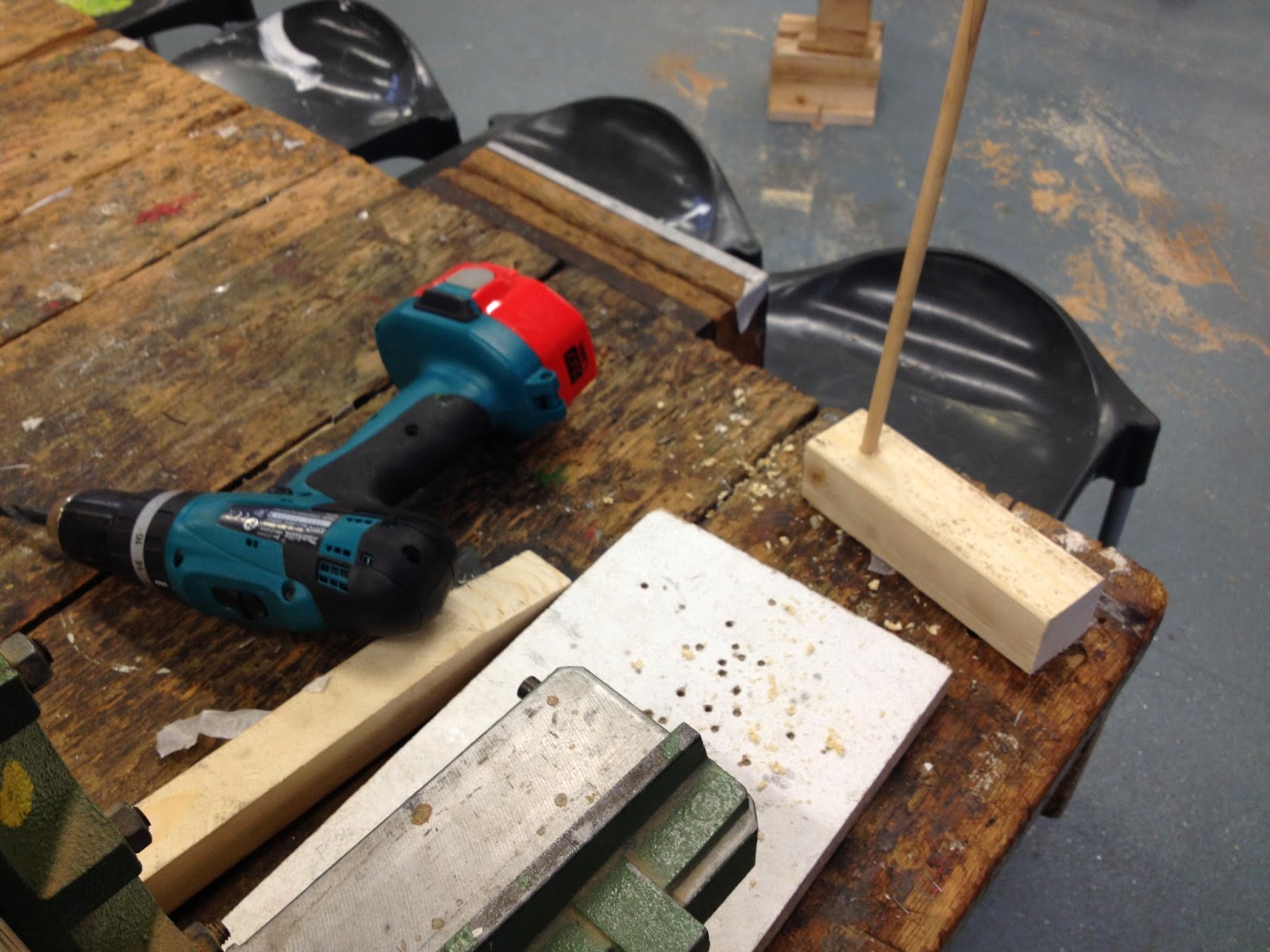




















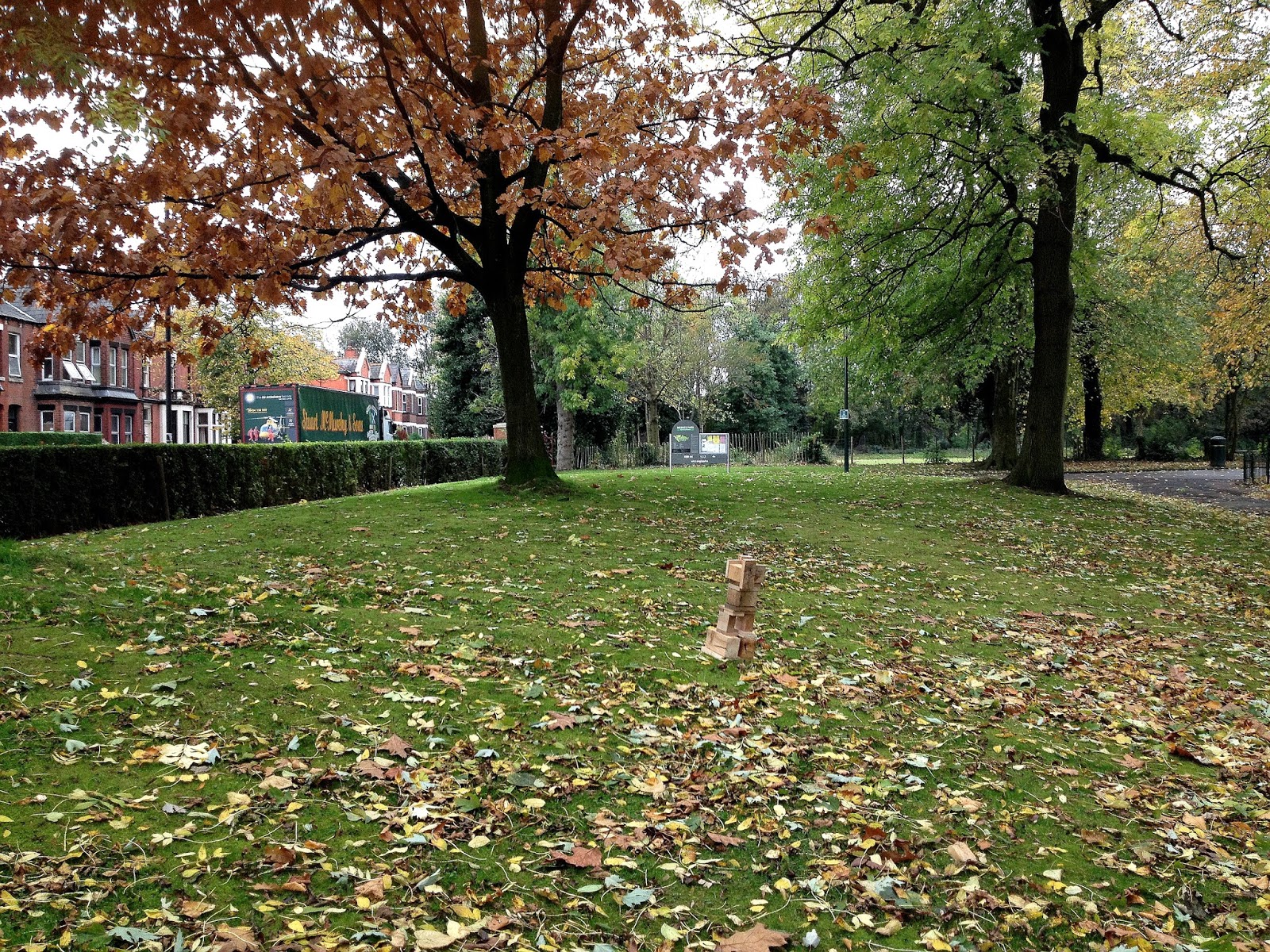
















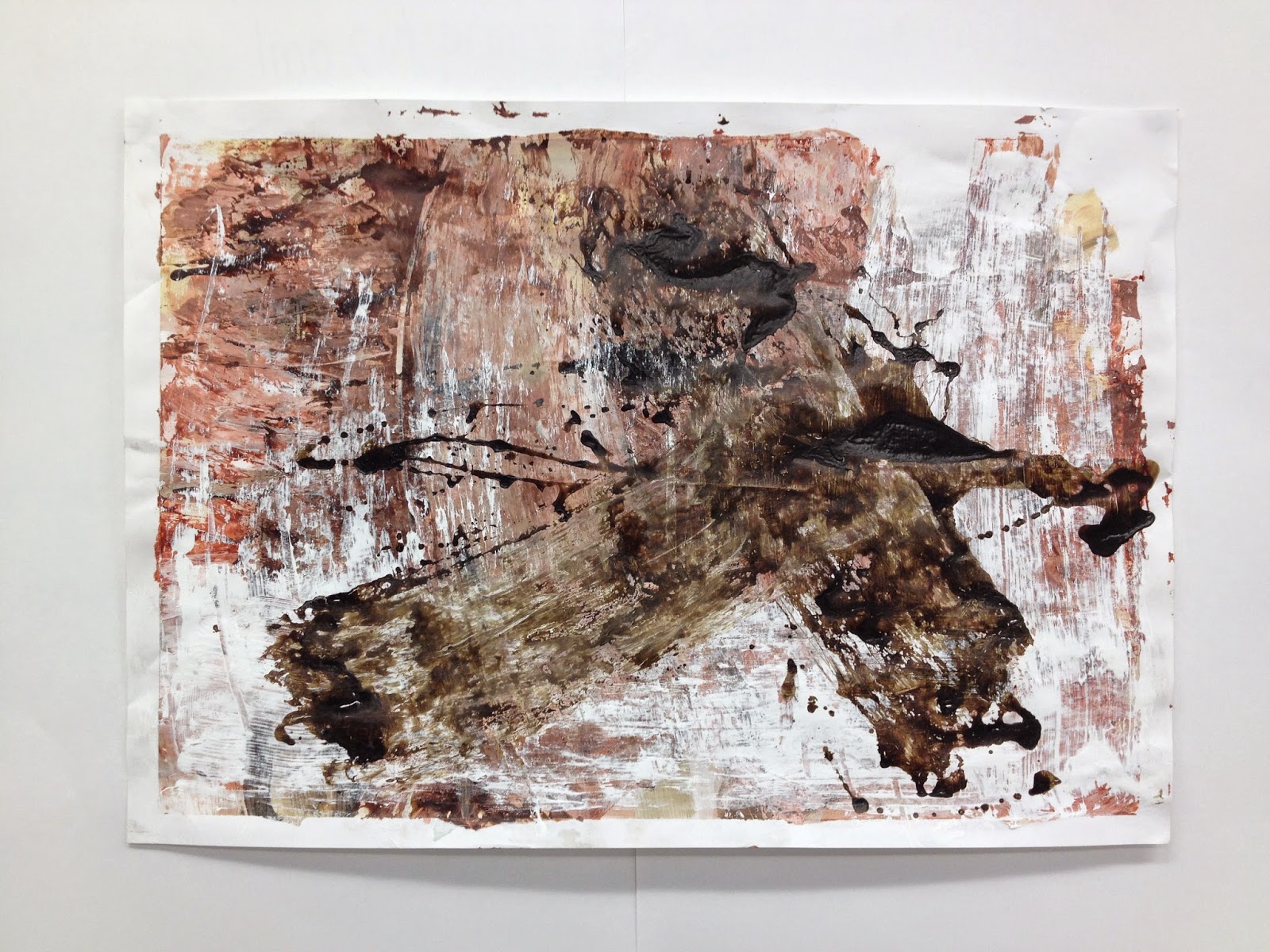


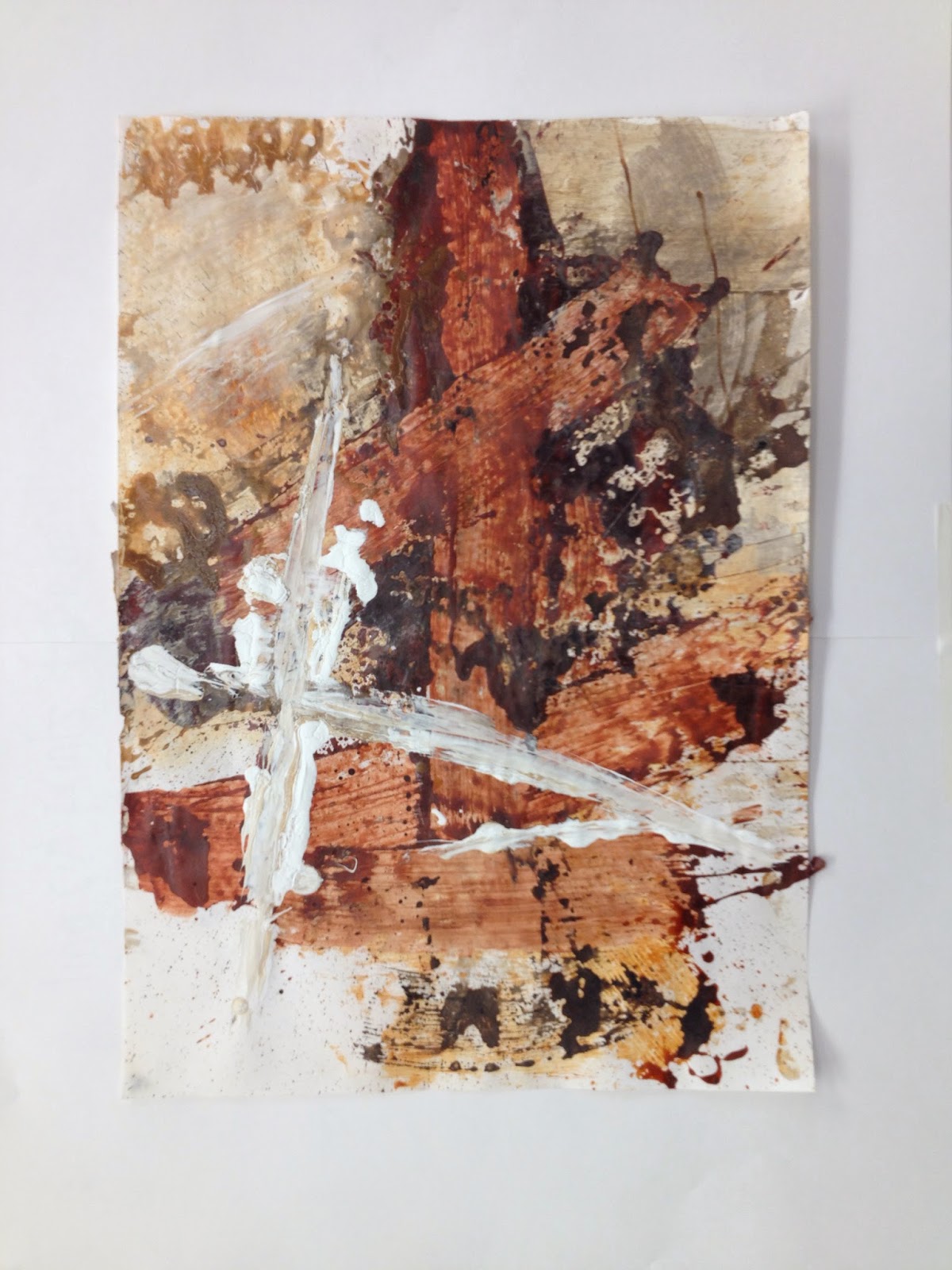

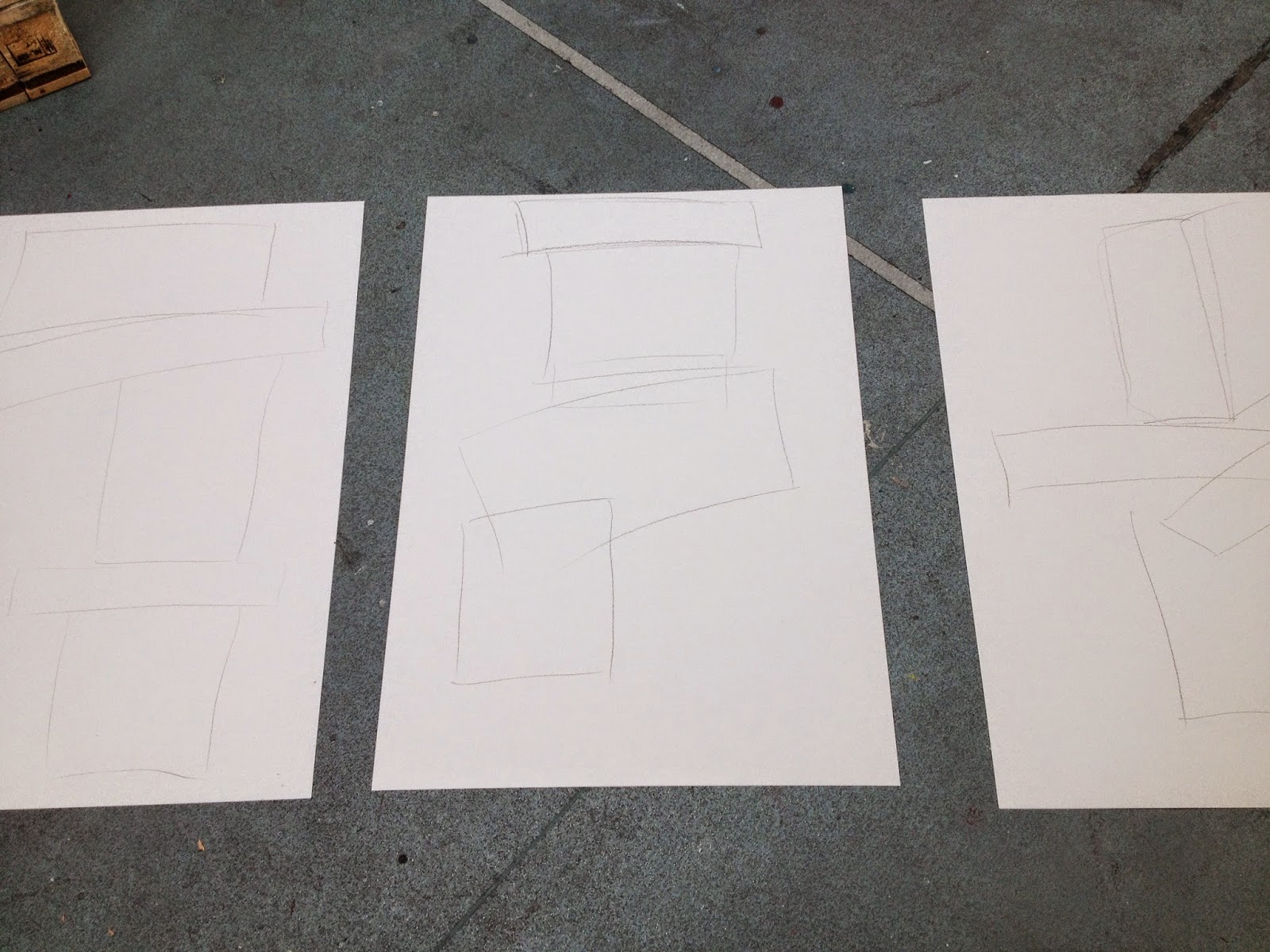
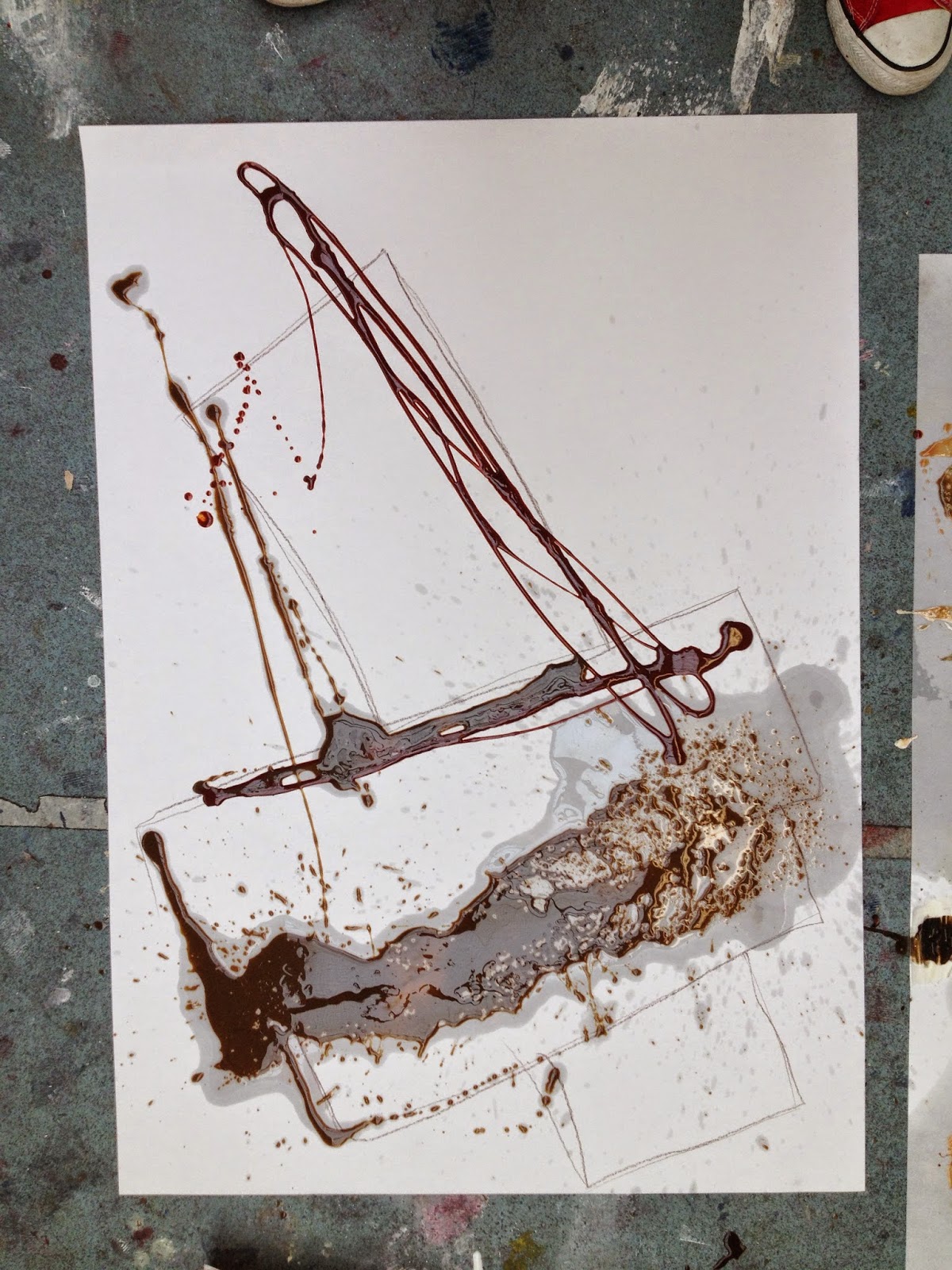

















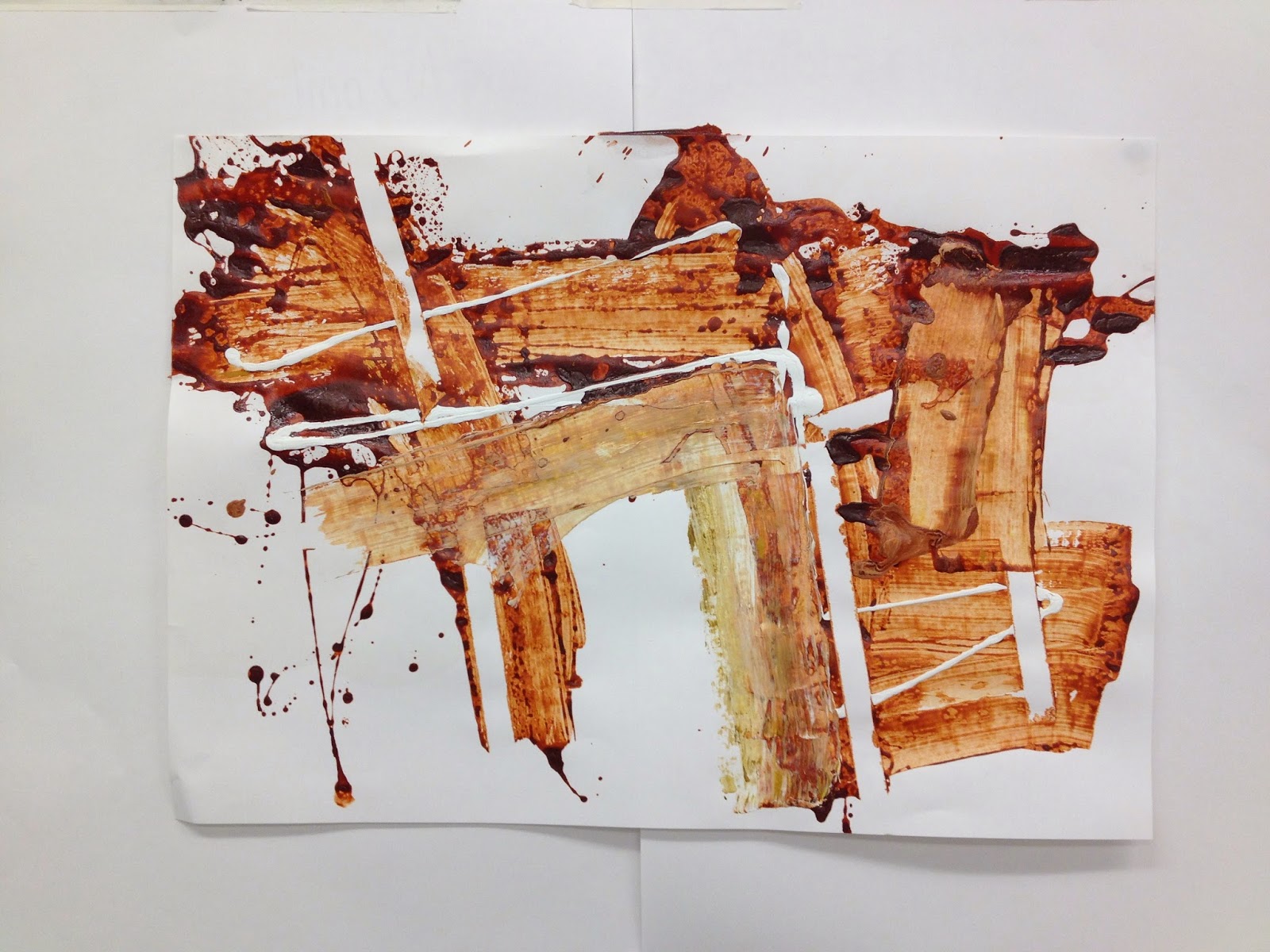


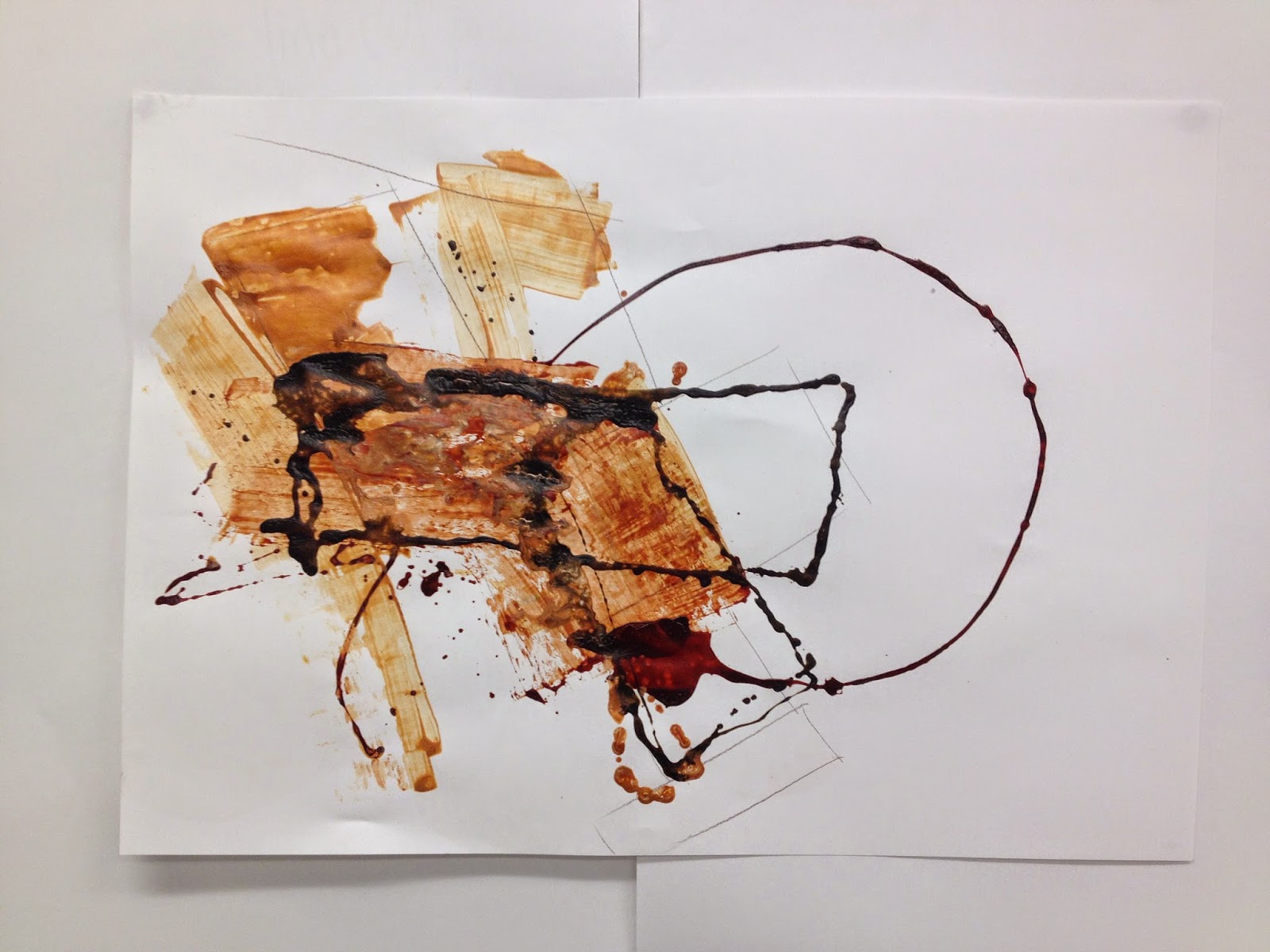

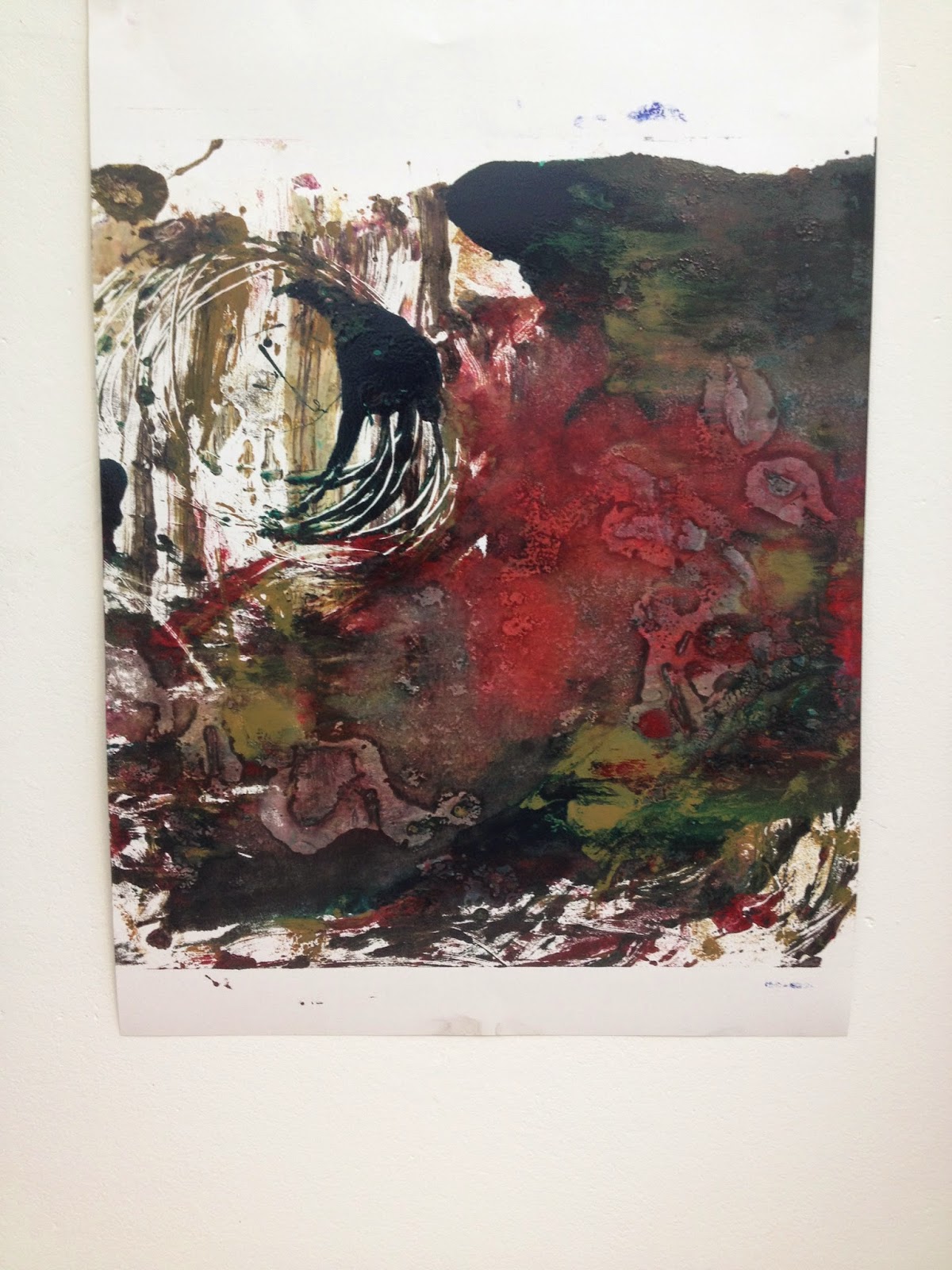





























No comments:
Post a Comment